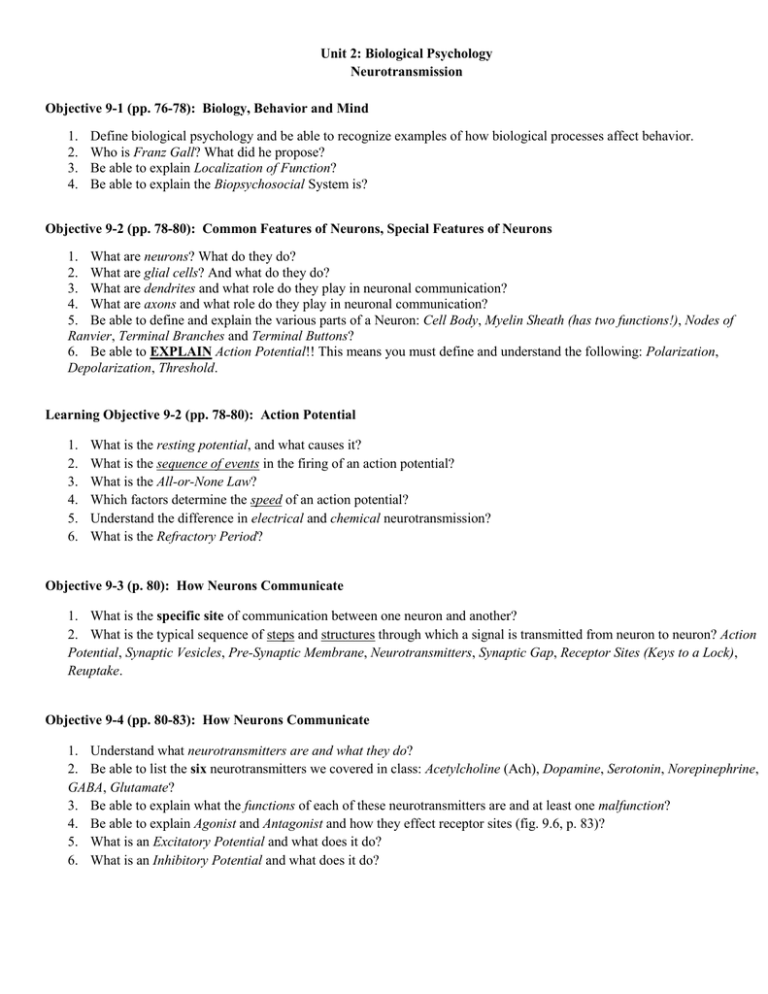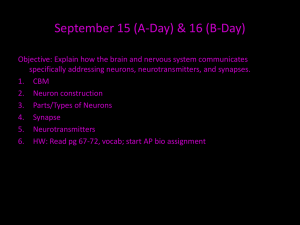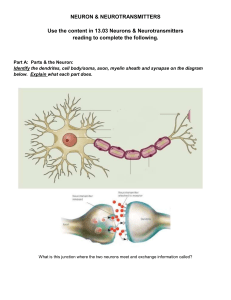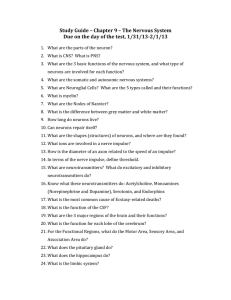Unit 2a Exam Review
advertisement

Unit 2: Biological Psychology Neurotransmission Objective 9-1 (pp. 76-78): Biology, Behavior and Mind 1. 2. 3. 4. Define biological psychology and be able to recognize examples of how biological processes affect behavior. Who is Franz Gall? What did he propose? Be able to explain Localization of Function? Be able to explain the Biopsychosocial System is? Objective 9-2 (pp. 78-80): Common Features of Neurons, Special Features of Neurons 1. What are neurons? What do they do? 2. What are glial cells? And what do they do? 3. What are dendrites and what role do they play in neuronal communication? 4. What are axons and what role do they play in neuronal communication? 5. Be able to define and explain the various parts of a Neuron: Cell Body, Myelin Sheath (has two functions!), Nodes of Ranvier, Terminal Branches and Terminal Buttons? 6. Be able to EXPLAIN Action Potential!! This means you must define and understand the following: Polarization, Depolarization, Threshold. Learning Objective 9-2 (pp. 78-80): Action Potential 1. 2. 3. 4. 5. 6. What is the resting potential, and what causes it? What is the sequence of events in the firing of an action potential? What is the All-or-None Law? Which factors determine the speed of an action potential? Understand the difference in electrical and chemical neurotransmission? What is the Refractory Period? Objective 9-3 (p. 80): How Neurons Communicate 1. What is the specific site of communication between one neuron and another? 2. What is the typical sequence of steps and structures through which a signal is transmitted from neuron to neuron? Action Potential, Synaptic Vesicles, Pre-Synaptic Membrane, Neurotransmitters, Synaptic Gap, Receptor Sites (Keys to a Lock), Reuptake. Objective 9-4 (pp. 80-83): How Neurons Communicate 1. Understand what neurotransmitters are and what they do? 2. Be able to list the six neurotransmitters we covered in class: Acetylcholine (Ach), Dopamine, Serotonin, Norepinephrine, GABA, Glutamate? 3. Be able to explain what the functions of each of these neurotransmitters are and at least one malfunction? 4. Be able to explain Agonist and Antagonist and how they effect receptor sites (fig. 9.6, p. 83)? 5. What is an Excitatory Potential and what does it do? 6. What is an Inhibitory Potential and what does it do?











